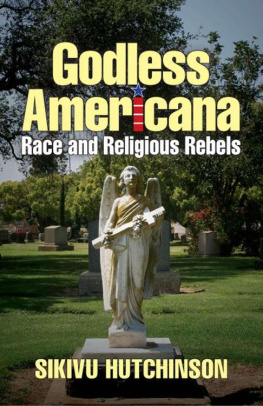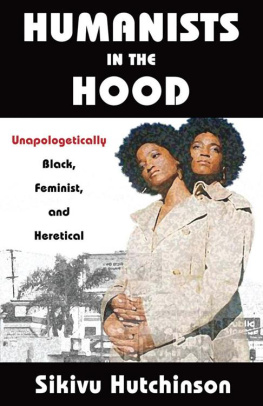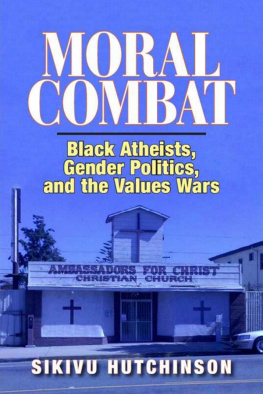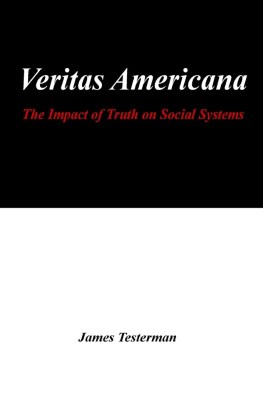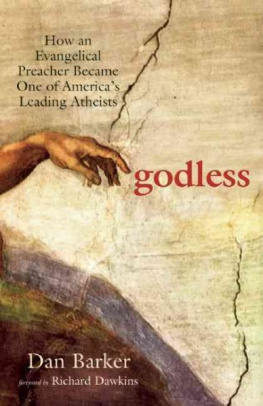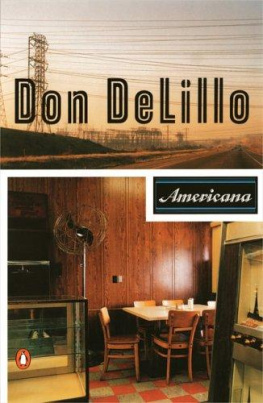Hutchinson, Sikivu.
Sikivu Hutchinson.
p. cm.
Includes bibliographical references and index.
1. African AmericansReligious life.
2. Civil rightsUnited States.
3. Religious fundamentalistsUnited States.
I. Title.
Acknowledgments
In the two years since the publication of my book, Moral Combat: Black Atheists, Gender Politics, and the Values Wars , there has been growing interest in non-believers of color. Nonetheless, there are still few book length analyses on the sociopolitical views, lived experiences, and belief systems of contemporary non-believers of color. Until Moral Combat , there were no books that placed the emergence of non-believers of color within the broader context of deepening class, race, and gender disparities in the United States. Godless Americana continues that discussion. This essay collection is the culmination of cross-disciplinary research, conversation, community organizing, and classroom teaching. The issues it addresses are in response to a global climate in which the forces of bigotry, discrimination, and intolerance have rolled back human rights in the name of God and public morality. The central question the book poses is how Humanism can become culturally relevant in an era in which socioeconomic and educational conditions for communities of color are increasingly dire.
Given these circumstances, I am grateful to all of the interview respondents who provided candid feedback on the intersection of atheism, humanism, feminism, and racial politics. My deep appreciation to my parents, Earl Ofari Hutchinson and Yvonne Divans Hutchinson, my husband Stephen Kelley, and friend Kamela Heyward-Rotimi for their support as well as patient, thoughtful critiques of early drafts of this book. Tom Melchiorre also provided invaluable assistance with editing and fine tuning. Over the past several years, Ive always been able to rely on the support, friendship, and crystal clear insights of Kamela, Diane Arellano, Heather Aubry, and Sumitra Mukerji for unconditional affirmation. Thanks are also due to Naima Washington and Donald Wright for their encouragement, as well as their commitment to social justice radical humanism. Finally, I am indebted to my students in the Womens Leadership Project, especially Eclasia Wesley, Imani Moses, Lizeth Soria, Janeth Silva, Miani Giron, and Ronmely Andrade. These strong young women continue to teach, challenge, and inspire me. They are the next generation of feminist humanist visionaries who will set the stage and lead the way.
Introduction
Prison House of Textbook History
In 1781, Afro-Latinos and Indians founded the city of Los Angeles. Their settlement followed the design of the original inhabitants, the Gabrielino Indians. In this so-called city without a history, legend has it that undocumented Anglos were the real o.g. (original) illegals. A few years before the founding of Los Angeles, a new revolution in what it meant to be human unfolded on the opposite shore in the British colonies. My students know the romance of the American Revolution but not the secret of Los Angeles. In the prison house of textbook history, they know each other mostly as enslaved niggers and wetback interlopers. Growing up, elbow-to-elbow in the same deeply religious neighborhoods, many are taught to believe that black and Latino culture can be distilled down to media stereotypes. The dominant culture programs them to read each other through the narrative of get-rich-or-die-tryin hip hop and ghetto dysfunction, or big Catholic families and job stealing illegals. As kindergartners they were taught to cite the pledge of allegiance as sacred chapter and verse, hand solemnly over heart, in homage to royal theft. Founding myths of heroic white men bootstrapping to liberty are intimately bound to their imagination of the classroom, to its rhythm of shrill discipline and stench of ground chalk; to a regime of time in which white supremacy and narratives of progress are the currency of American faith.
Over the past several years, the Right has spun the fantasy of colorblind, post-racial, post-feminist American exceptionalism. This Orwellian narrative anchors the most blistering conservative assault on secularism, civil rights, and public education in the post-Vietnam War era. It is no accident that this assault has occurred in an era in which whites have over twenty times the wealth of African Americans. For many communities of color, victimized by a rabidly Religious Right, neo-liberal agenda, the American dream has never been more of a nightmare than it is now. Godless Americana is a radical humanist analysis of this climate. It provides a vision of secular social justice that challenges Eurocentric traditions of race, gender, and class-neutral secularism. For a small but growing number of non-believers of color, humanism and secularism are inextricably linked to the broader struggle against white supremacy, patriarchy, heterosexism, capitalism, economic injustice, and global imperialism. Godless Americana critiques these titanic rifts and the role white Christian nationalism plays in the demonization of urban communities of color.
Historically, Americana has symbolized mom, Apple pie, and the idyllic innocence of little white kids with fishing poles grinning from Norman Rockwell paintings. The dark underbelly of Americana is the lawless urban racial Otherthe fount of all that threatens American progress. During the 2012 presidential campaign, this apocalyptic theme was sounded again and again by Religious Right GOP presidential candidates like Newt Gingrich and Rick Santorum. Dubbing President Obama the food stamp president, Gingrich was an especially effective demagogue for capitalist class entitlement. Railing against child labor laws, Gingrich commented that:
Really poor children, in really poor neighborhoods have no habits of working and have nobody around them who works so they have no habit of showing up on MondayThey have no habit of staying all day, they have no habit of I do this and you give me cash unless it is illegal.
When I mentioned Gingrichs diatribe during a training session with a group of African American and Latino teachers, it was clear to them that the really poor children Gingrich was talking about werent Appalachian white children or Honey Boo Boo from the hit reality show of the same name. Gingrichs really poor neighborhoods (rife with illegal activity) were not the mythic trailer parks and Bruce Springsteen blue collar salt-of-the-earth suburbs where the majority of the nations white welfare recipients presumably live. These were not the neighborhoods that produced the really poor children Gingrich exhorted to work as unpaid janitors in under-resourced, overcrowded inner city schools.
As a symbol of moral failure and ghetto pathology, American public education has always been red meat for the far right. But what is more insidious is that both the Obama administration and the Right have joined forces in ravaging public education. The Obama administrations 2009 Race to the Top policy has opened the floodgates to privatized schools, dumbed-down curricula, and a permanent regime of high stakes testing that undermines teacher creativity and guts teachers unions. Nationwide, public schools have been targeted for charter conversion by foundations, corporations, and hedge fund managers on the hunt for desperate inner city school districts. The neo-liberal magic bullet for reforming K-12 education is carving schools up for the highest corporate bidder. Special needs students, English language learners, and other problem demographics are then shoved out the back door. As the gutting of American public education proceeds, aided and abetted by both liberals and conservatives, radical and progressive education activists continue to reshape the dialogue about the so-called achievement gap in public schools. Culturally relevant or culturally responsive pedagogy that builds on the lived experiences, cultural knowledge, language, and world views of children of color has become a standard, if still controversial, approach to redressing race and class disparities in education. Culturally relevant pedagogy rejects myths of meritocracy, colorblindness, and exceptionalism. At its most radical, cultural relevance critiques institutional structures of racist power and control that render children of color invisible within mainstream curriculum and instruction. It is based on the view that challenging traditional Western notions of what it means to be moral, to be a citizen, and to be human is implicit within the politics of education and that teaching to transgress is a social obligation.

